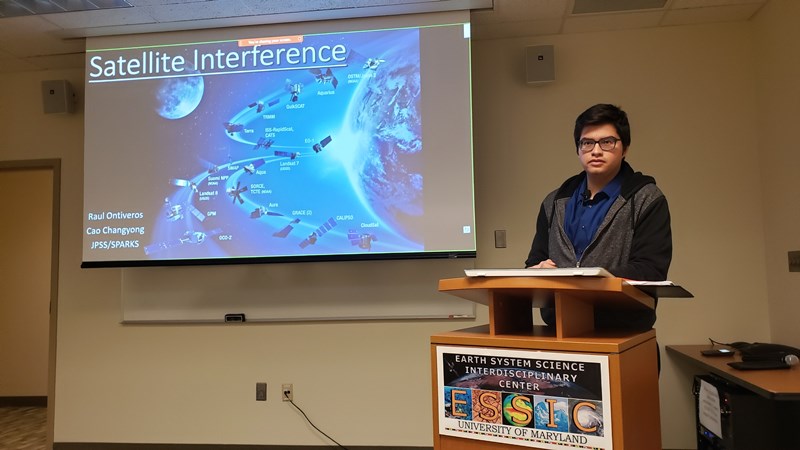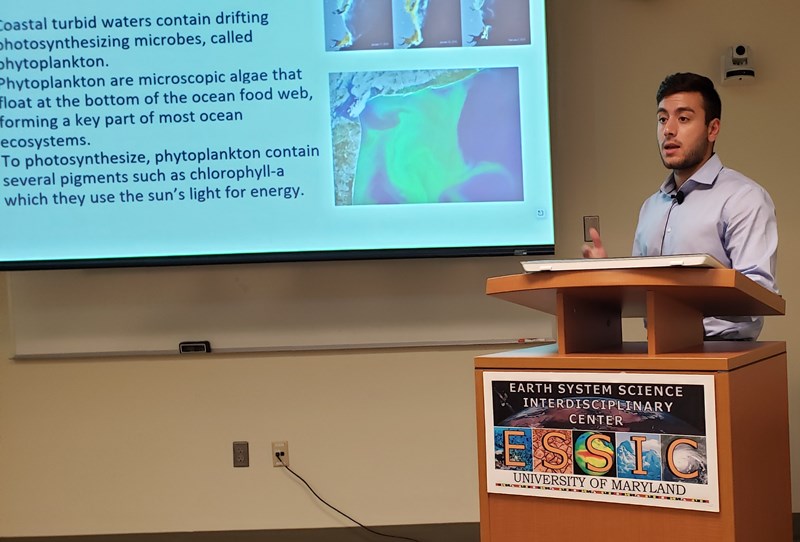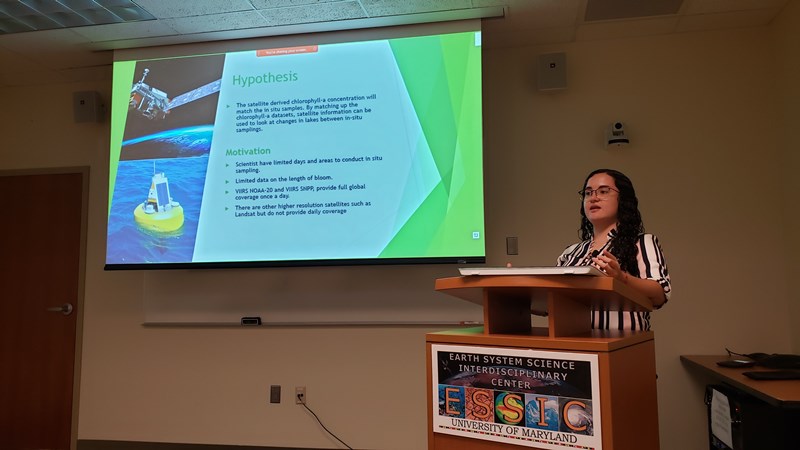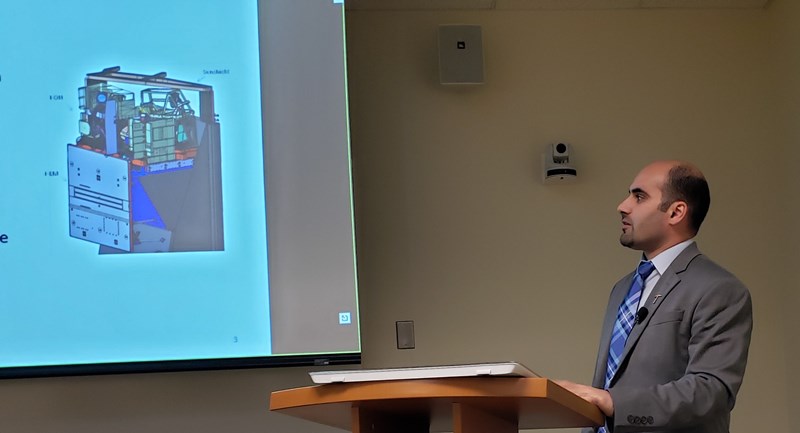Six JPSS SPARKS Students Present their Research Results
August 15, 2019 01:14 AM
The JPSS Students Professional and Academic Readiness with Knowledge in Satellites (SPARKS) program held a nine-week course this summer for graduate students with speakers drawn from NOAA and Affiliate JPSS Scientists. The goal of the JPSS SPARKS program is to groom the next-generation cadre of JPSS scientists through pragmatic education and training. The program was co-led by the CREST, IMSG and CICS-MD. Dr. Shakila Merchant (CREST) is the task leader of the grant and Dr. Murty Divakarla (IMSG) is the on-site leader while Dr. E. Hugo Berbery (CICS) is a collaborator on the task. Michael Wilson (IMSG) led the classes, which included computer training and guest lectures from NOAA Scientists working with JPSS. In addition, each of the six students had a NOAA mentor to work with on a summer research project. The program just wrapped up and the students gave their presentations on their projects on Tuesday, August 6. Here are some of the highlights:

Carolien Mossel worked with NOAA Scientist Ralph Ferraro (STAR/CoRP/SCSB) on a case study of the May and June 2019 flooding in Fort Smith, Arkansas. Most flood forecasting relies on precipitation data but she looked at satellite soil moisture to see if that could help predict the flood. Her soil moisture data came from SMOPS, which provides a seamless soil moisture map over global land from six satellites. The rain data comes from the blended JPSS CMORPH product and SCaMPR. The soil moisture data was able to show in advance of the floor that the soil had no more capacity left to absorb the rain. Much of the rain fell upriver rather than in Fort Smith itself.

Raul Ontiversos worked with NOAA Scientist Changyong Cao (STAR/SMCD) this summer on radio and television signal interference with NOAA satellite, specifically the Advanced Technology Microwave Sounder (ATMS) on the JPSS Satellites. Much of the interference comes from the reflection of signals on the ocean surface.

Stefanos Spiratos worked with CISESS Scientist Veronica Lance (STAR/SOCD) on comparing retrieval algorithmns for chlorophyll. Since he had already been working on a CISESS task on harmful algae blooms led by CREST Scientist Samir Ahmed, he was able to jump into the coding. The data he used was from JPSS VIIRS from over the Chesapeake Bay. He compared a CREST-developed neural network to the operational algorithm. Overall, the neural network did show better results when compared with in situ measurements.

Alejandra Ramirez Pabon also worked withVeronica Lance on VIIRS chlorophyll-a product but her focus was on how accurate it was for lakes. She looked at three different lakes: Lake Tahoe, Cheney Reservoir and Upper Lake Klamath.She compared the VIIRS data to USGS in situ water quality samples. The performance of VIIRS deteriorated as the concentration of photoplankton increased. This was not surprising since the retrieval algorithm was developed for low-concentration plankton blooms in the open ocean, not the higher chlorophyll concentrations found in lakes. The in situ data is only available on a monthly/seasonal basis so a daily satellite product would be a great improvement.

Mohammed Liyachi worked with on the JPSS VIIRS Aerosol Optical Depth (AOD) product with NOAA Scientist Shobha Kondragunta (STAR/SMCD/SCDAB) this summer. One of the problems that has been seen in this product has been the high amount of data thrown out by the quality control algorithm, particularly when there are smoke or dust “masks.” He dug into the quality control/error flags, which turned out to be very complex. He narrowed his focus to criteria for retrieval quality over water and for land to identify recurring problems that may be ameliorated.

Maher Aldeghlawi worked with NOAA Scientist Lihang Zhou (STAR/SMCD) on the Infrared Atmospheric Sounder Interferometer–New Generation (IASI-NG), which will be on the new Metop satellites to be launched in 2021. The NOAA JPSS program has developed an algorithm for the Advanced Technology Microwave Sounder (ATMS) and Cross-Track Infrared Sounder (CrIS). The question he was asked to answer was whether there was an easy way to adapt those algorithmn to work for IASI. The primary inconsistency is IASI-NG is that its Field of View (FOV) has a 5 x 5 grid while CrIS has a 3 x 3 grid and the old IASI has a 2 x 2 grid. He tested several different ways to do this.
« Back